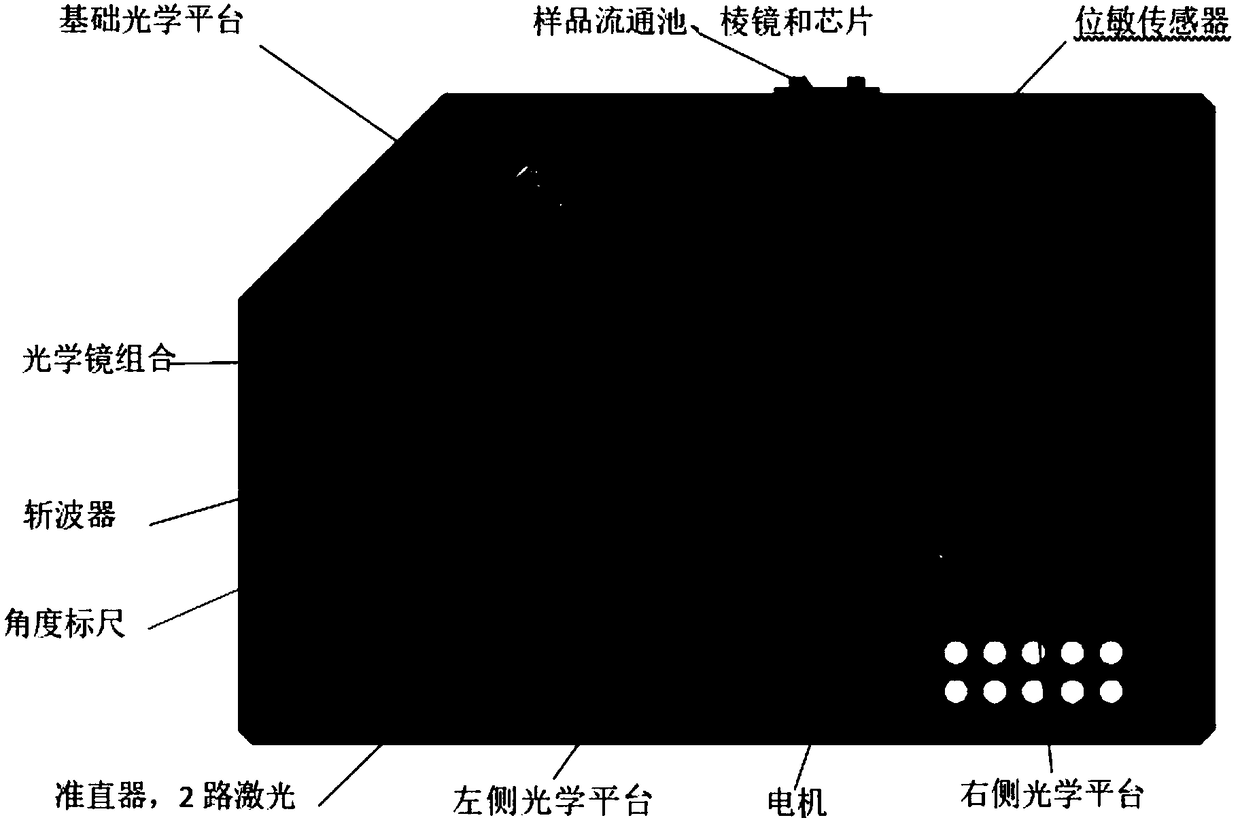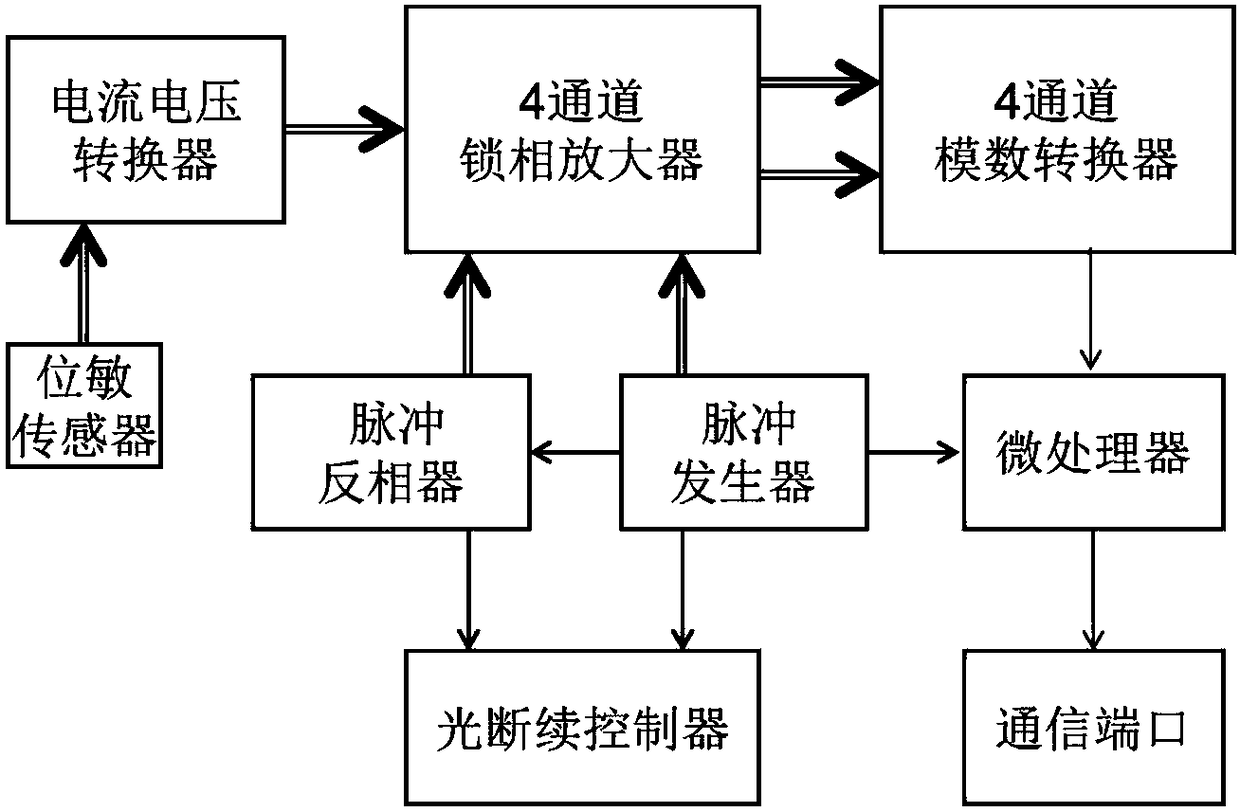Portable enhanced surface plasmon resonance biosensor
A sensor and ion technology, applied in the field of ion resonance biosensors, can solve the problems that are difficult to adapt to simple, fast, accurate, sensitive, on-site tracking detection, sensors rely on large instruments and equipment, and time-consuming, etc., to achieve GH displacement measurement , Accurate and reliable GH displacement measurement, the effect of improving stability and reliability
- Summary
- Abstract
- Description
- Claims
- Application Information
AI Technical Summary
Problems solved by technology
Method used
Image
Examples
Embodiment 1
[0066] The preparation of embodiment 1 sensor
[0067] Such as figure 1 As shown, all optical components used in the sensor are placed and sealed in a light-tight waterproof module, and are connected to the external laser light source and circuit board through an adapter and connection port. The size of the single beam emitted by the two laser diodes is limited to about 200 microns by a microhole, respectively, and passes through the p- and s-polarizers respectively, and is modulated by the inverse optical chopper, that is, when the p-polarized beam passes through, s - The polarized beam is blocked, and vice versa, the two beams alternate at a frequency of about 240Hz, pass through an optical mirror combination consisting of a mirror, a polarizing beam splitter and a convex lens, the two beams merge into the same optical path, and then focus The lens is refracted onto the entrance face of the gold-coated prism that makes up the sensor chip. The distances from the lens to the...
Embodiment 2
[0070] Embodiment 2 single reflection GH-SPR test
[0071] Using the sensor of Example 1, a single reflection GH-SPR test was performed using optimized SPR conditions (gold film thickness 50nm, laser wavelength 650nm, incident angle 45 degrees), and a significant GH shift was measured. Such as Figure 4 As shown, after coupling SPR, the GH displacement of the sensor of the present invention is significantly increased, and the noise is significantly reduced by using a 16-bit analog-to-digital converter. Moreover, after the system is equipped with a black casing, environmental interference is shielded, and the signal quality is significantly improved.
Embodiment 3
[0072] Example 3 Detection of Hg Using Double-Stranded DNA Containing T-T Mismatches 2+ detection method
[0073] Such as Figure 5 As shown in (A), a single-stranded DNA is immobilized on the surface of the GH-SPR sensor gold membrane through a sulfhydryl group, and the other single-stranded DNA that is mismatched with T-T cannot form a stable hybrid double-stranded DNA, but has Hg 2+ When present, with Hg 2+ Multiple T-Hg-T coordination structures are formed to obtain stable hybrid double-stranded DNA, which forms a different SPR response from a single-stranded DNA on the sensor surface, resulting in changes in GH displacement. The length of the DNA chain, the number and position of T-T mismatches are the key to the design of this type of DNA, and the optimization of these parameters will improve the detection effect. Captured DNA and Hg 2+ It can be eluted with cysteine solution, so that the ONP immobilized on the surface of the sensor can be reused. After testing, t...
PUM
| Property | Measurement | Unit |
|---|---|---|
| thickness | aaaaa | aaaaa |
| transmittivity | aaaaa | aaaaa |
Abstract
Description
Claims
Application Information
 Login to View More
Login to View More - R&D
- Intellectual Property
- Life Sciences
- Materials
- Tech Scout
- Unparalleled Data Quality
- Higher Quality Content
- 60% Fewer Hallucinations
Browse by: Latest US Patents, China's latest patents, Technical Efficacy Thesaurus, Application Domain, Technology Topic, Popular Technical Reports.
© 2025 PatSnap. All rights reserved.Legal|Privacy policy|Modern Slavery Act Transparency Statement|Sitemap|About US| Contact US: help@patsnap.com



